It’s early morning and Dubrovnik’s old town looks deserted. The gray clouds that brought a downpour last night still linger over the city walls, making them look dark and gloomy. The somber atmosphere seems to be in tone with our purpose: seeing Dubrovnik’s Fort Imperial, the symbol of defense of the City of Dubrovnik against Serbian and Montenegrin armies, in 1991.
Reaching the Forth Imperial requires a short cable car ride to the top of Mount Srd. One of the easiest day trips from Dubrovnik. There are only a few people in line as we arrive at the ticket booth. Behind the glass window the cashier is chatting on her phone while selling tickets. “Two round-trip tickets please,” I ask when our turn comes. If the weather was better we could walk the trail back down the mountain, but today it may rain.
Table of Contents
What to Expect Atop Mount Srd
Visiting Mount Srd is one of the most interesting things to do in Croatia and most people do it as a day trip from Dubrovnik. The cable car ascends leaving behind the red rooftops of the old town. The ride up is quite short, just 3-4 minutes. At the top of the hill a wide viewing platform opens up to the right of the station.
Everybody from the cable heads directly there, drawn by the panoramic views of Dubrovnik and the Adriatic Sea. Ahhhh! It’s indeed magnificent, even though it’s cloudy. I wish I could stay here longer to admire the view, but the chilly wind that sweeps up the terrace, chases me away after a few minutes. Brrr, it’s cold!
Next to the viewing platform stands a 20-meter high limestone cross with an altar, a gift from the Archdiocese of Brač – a small island located in between Split and Hvar. It looks quite dramatic against the gloomy sky.
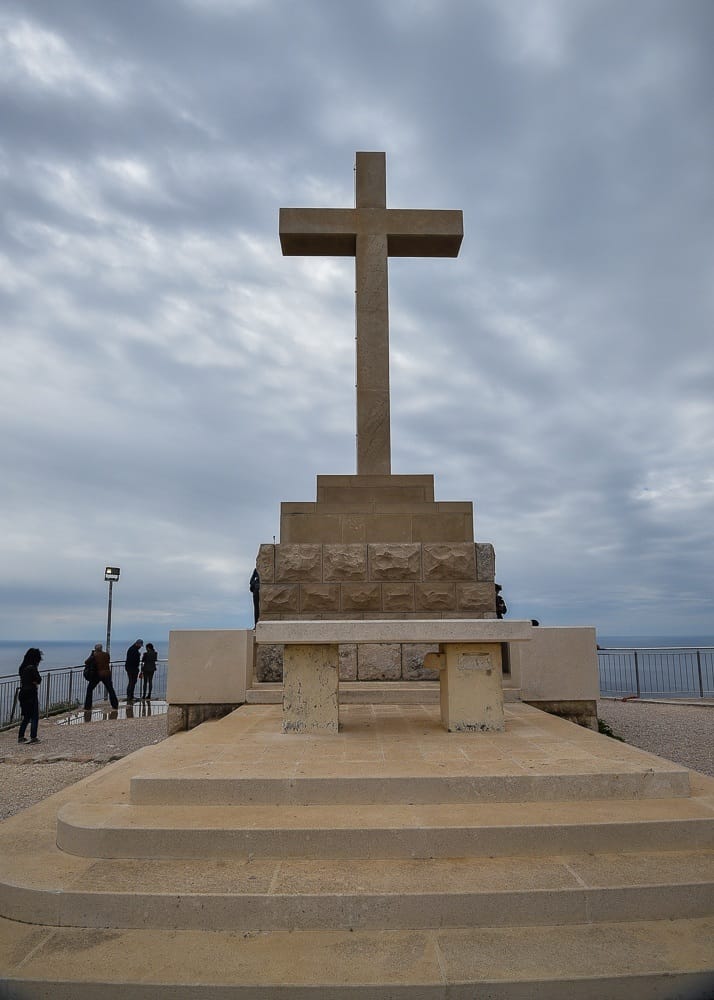
Two young lovers snug into each other trying to photograph themselves next to the cross. The wind keeps blowing her long hair into his face, making him look like he has a beard.
Since we can’t linger around the terrace to enjoy the views, we head toward the military stronghold of Fort Imperial, which is at the left of the cable car.
READ NEXT: Where to Stay in Dubrovnik.
A Brief History of the Fort
The fort was completed in 1812 by Napoleon’s occupying soldiers. After Napoleon’s fall, the Austro-Hungarian authorities took possession of Dubrovnik, enlarging and reinforcing the fort.
By the end of the century, as the Austro-Hungarian empire annexed Bosnia-Herzegovina, the fort lost importance as a defense fortress. Fort Imperial was used again as a military base in the 90s, during the Homeland War against the Serbian and Montenegrin armies.
Visiting the Forth Imperial in Dubrovnik
From a distance, Fort Imperial doesn’t seem like much of an attraction, especially when compared to other attractions in Dubrovnik. Some crumbling walls dominated by a TV tower spearing towards the sky, like a rocket ready to be launched.
The masses of visitors coming up to Mt. Srđ every year are more interested in the sweeping views from atop the mountain, than the partially abandoned fortress. Very few of them actually take the time to visit the fort premises and the museum dedicated to the defense of Dubrovnik during the Homeland War, housed in one of the fort wings.
The museum is small but has plenty of powerful images and exhibits that will give you an insight into Croatia’s War of Independence. There are documents, photographs, weapons and explosive devices, war maps, and objects from the every-day life that belonged to the defenders of Dubrovnik.
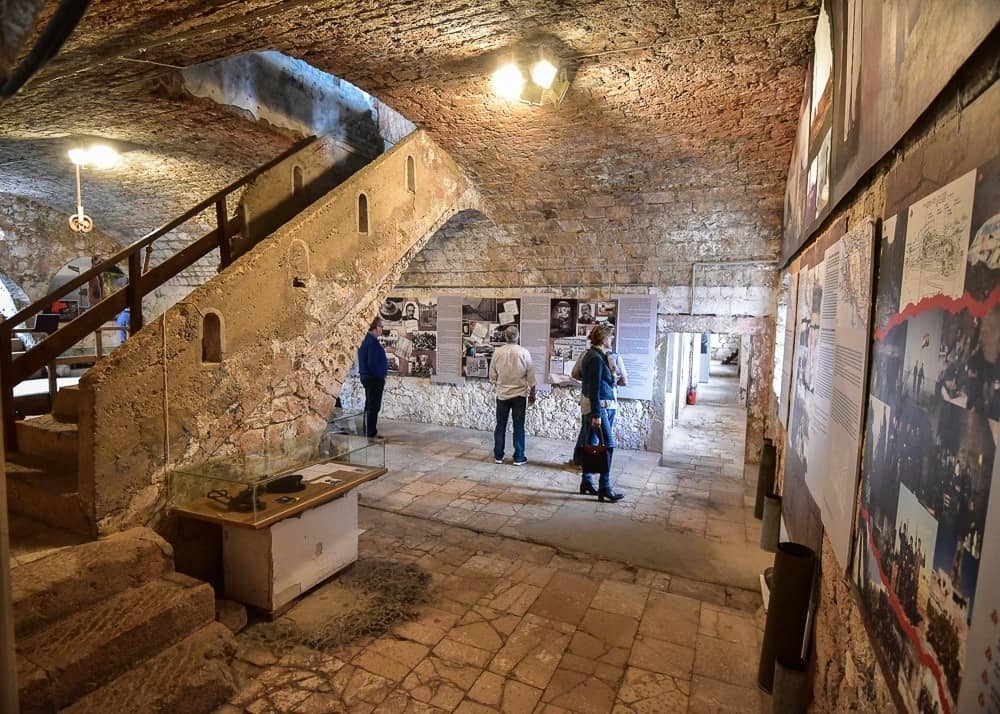
In one of the rooms there is video recording playing. We sit down to watch.
October, 1991, Yugoslav National Army and its allies captures the resort of Slano north of Dubrovnik, cutting the city off from the rest of Croatia. Over 50,000 civilians and refugees are trapped inside the city. All roads to Dubrovnik are blocked.
Horror Stories!
Defenders fall back on Fort Imperial in Dubrovnik the Napoleonic-era strongpoint at the summit of Mt Srd. “They cut our electricity, water and telephone lines,” a young man in the video is telling the TV reporter.
” The basic supplies have to be brought in by boat while Dubrovnik’s port is swarming with Yugoslav gunboats and the federal army artillery units are pounding the city … Ordinary people in Dubrovnik have been given an opportunity to evacuate their home, but they refused. Now they are waiting to see how the federal army will respond to their defiance….
The Adriatic sunsets are spectacular, but they bring terror to the citizens of Dubrovnik. Federal forces appear to wait the day’s end to begin the real bombardment. The attack appears to be indiscriminate.
On Saturday night a popular hotel just outside the city took several direct hits. Mortar was dropping through the roof into the rooms. The hotel had been used as a shelter by hundreds of families with children who ironically had fled to Dubrovnik trying to hide from the bombardment…” excerpts from the daily news reported by foreign journalists during the siege.
We watch in disbelief. These are authentic recordings that reveal horrifying stories from the Siege of Dubrovnik. Stories of ethnic cleansing, mass murder, rape, and genocidal acts.
Tales of horrendous sufferings endured by the Dubrovnik’s residents who ended up in Morinj (near Kotor, Montenegro) concentration camp. Evens that took place not in some distant and uncivilized country, a long time ago, but right in the heart of Europe a little over twenty years ago!
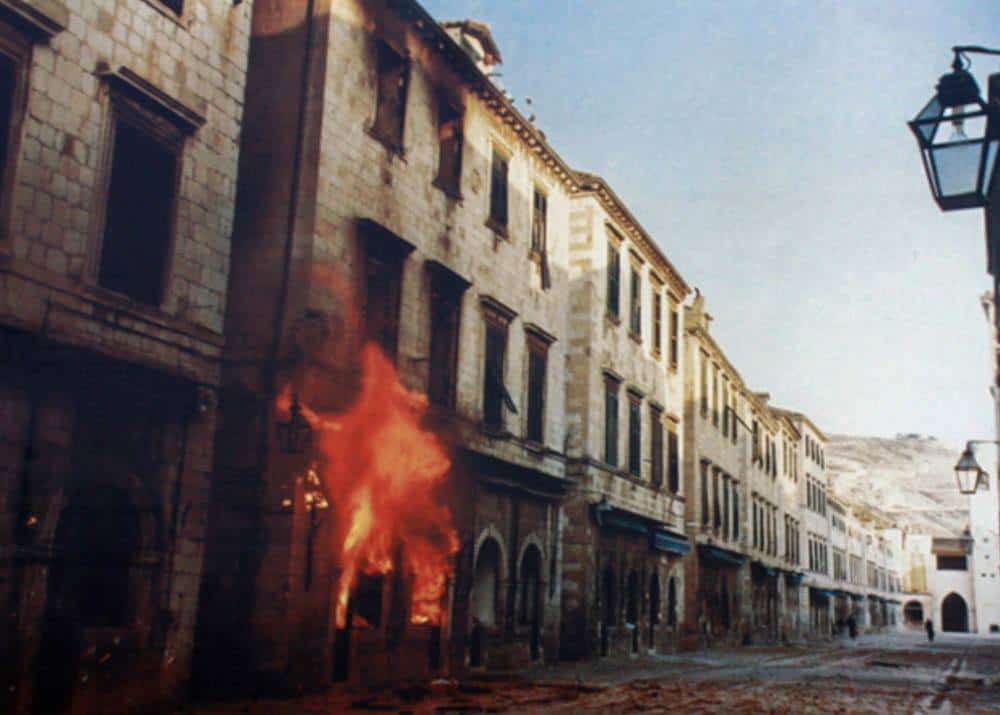
The last image I see before leaving the room is that of a middle aged woman weeping over her son’s grave:
“How could Europe … and that Milosevic …. watch all these people die?“
The siege of Dubrovnik lasted nine months and had devastating consequences on the entire region. Hundreds of people have been killed and thousands of buildings destroyed. The Old Town Dubrovnik looked like a war zone. On St. Nicholas Day, this beautiful UNESCO heritage site was reduced to a pile of rubble.
Understanding Croatia’s War of Independence
To understand Croatia’s war in the 1990s, it is important to understand the historical background of this country before the war. Yugoslavia was created at the end of World War I when Slovenian, Croat and Bosnian territories that belonged to the Austro-Hungarian Empire united with the Serbian Kingdom.
During World War II, under the Nazi occupation, Yugoslavia broke up with the creation of a Nazi-allied independent Croat state, but was reunified at the end of the war when the communist Josip Broz Tito liberated the country.
After the collapse of communism in Eastern Europe in 1989, Yugoslavia broke into six independent states. But the sizable ethnic Serb minority in Croatia openly rejected the authority of the newly proclaimed democratic Croatian state.
Croatia was, and still is, the hottest piece of geographic real estate in Europe, so it is to no surprise that Serbia wanted its territory. Serbia’s leadership declared the rights of the Serbs to remain within Yugoslavia, despite the fact that Croatia had been internationally recognized as a sovereign state.
In 1991, the Croatian rebel Serbs aided by Serbian-led Yugoslav People’s Army, declared Croatia’s territory an independent Serb state and began an ethnic cleansing campaign, expelling all Croats from its territory.
The Serb aggression against Croatia began in 1991 with the horrific conflict of ethnic cleansing, mass murder, rape, concentration camps the rebel Serbs aided by Serbian-led Yugoslav People’s Army and Montenegro.
The heavy fighting began in December, 1991, with the siege of Dubrovnik and the destruction of Vukovar by Serb forces. The siege was accompanied by a Yugoslav Navy blockade and the bombardment of Dubrovnik, including the Old Town, which was a UNESCO World Heritage Site.
Fort Imperial had a very important role in the defense of Dubrovnik, as it was the only place in the hands of the Croatian Army that was surrounded by the Serbian and Montenegrin army.
The largest attack on Fort Imperial and Dubrovnik was launched on December 6, 1991. The fighting lasted all day and the fortress suffered extensive damage, but the few defenders in the fort managed to withstand the attack. The bombardment provoked international condemnation, and became a public relations disaster for Serbia and Montenegro, contributing to their diplomatic and economic isolation.
Croatia’s War of Independence lasted till 1995 and ended with Croatia’s victory. The country’s economy was ruined, with an estimated US$37 billion in damaged infrastructure, lost production, and refugee-related costs. A total of 20,000 people were killed in the war.
The bloody desintegration of Yugoslavia is considered Europe’s worst holocaust since World War Two. The wars lasted for much of the 1990s. It resulted in more than 130,000 deaths, millions of refugees, routine rapes and ethnic cleansing.
Despite all the atrocities committed by the Serbs in the early 1990s, a U.N. Court dismissed Croatia’s case that its citizens had been victims of genocide. In 2015, the International Court of Justice ruled that Serbian forces committed indeed “egregious violent acts” against ethnic Croatians, but they don’t equate to genocide. As such, modern-day Serbia will not have to pay restitution to Croatia for what happened in 1991 in Dubrovnik.
From afar, the red rooftops of the old town back-dropped against the blue waters of the Adriatic look so peaceful and surreal. Like a field of red poppies gleaming in the morning sun.
Some 20 years after the end of the Yugoslav War, Dubrovnik seems to emerge from the fighting more beautiful than ever. Very few signs of the destruction brought by the siege are visible today. But if you engage people in a conversation, the deep wounds left by the war begin to show.
“We try to forgive but we can’t forget. Not all the way. Maybe just enough so that we could go on.”

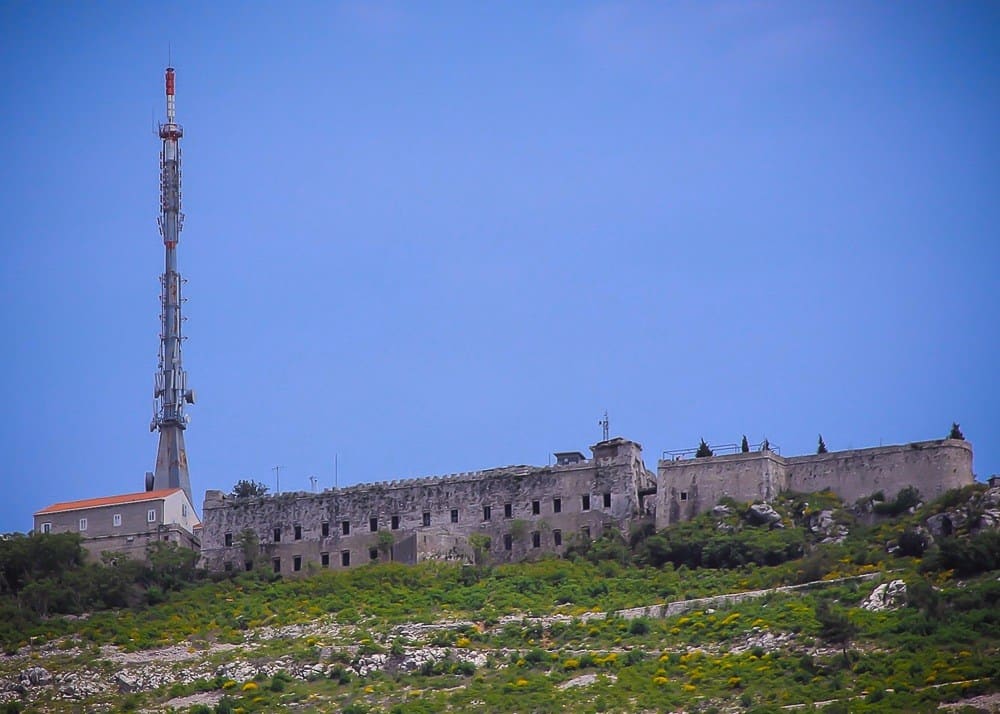
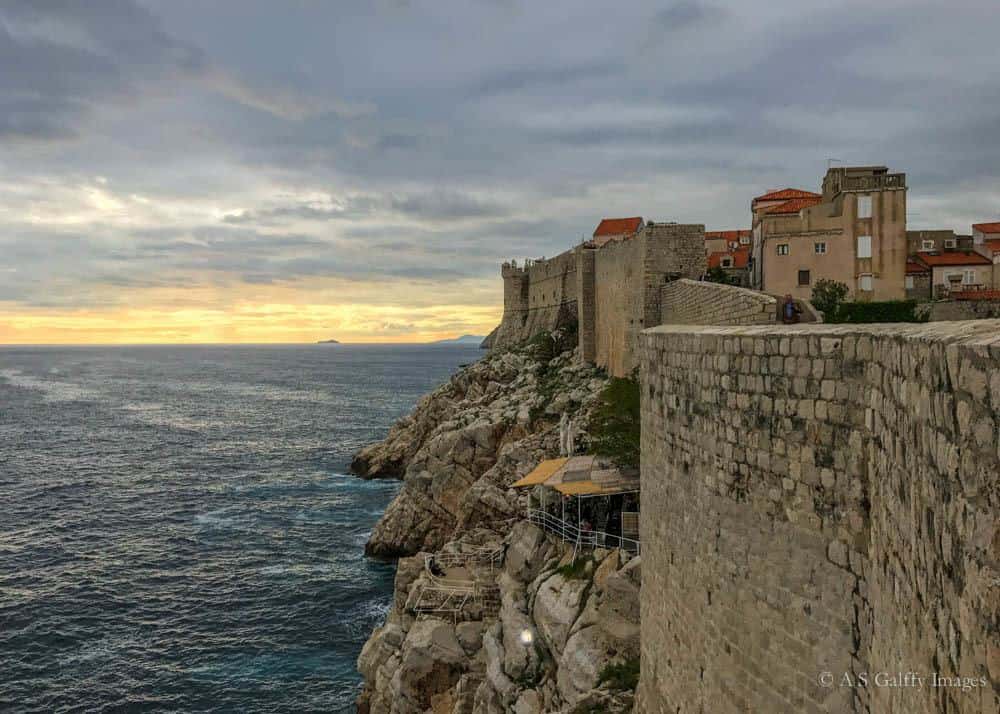
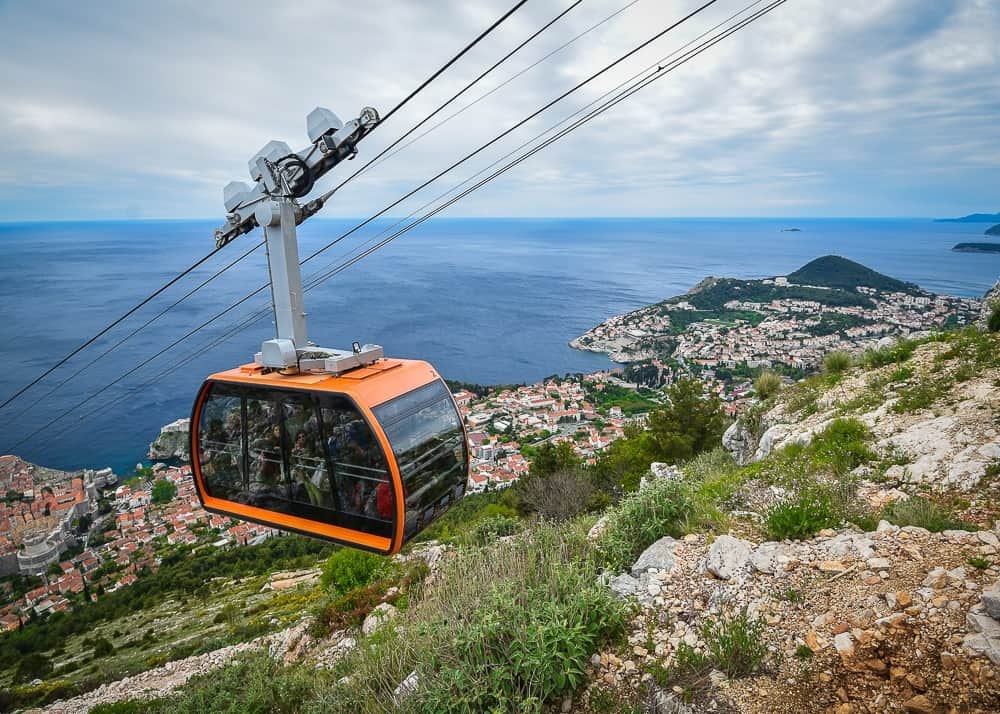
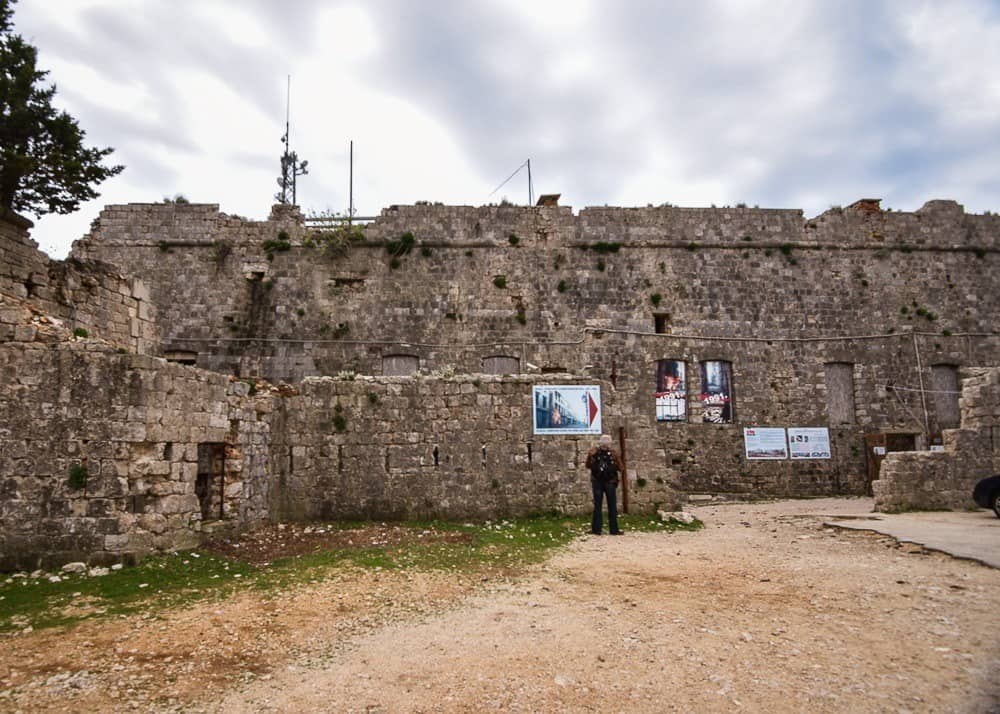
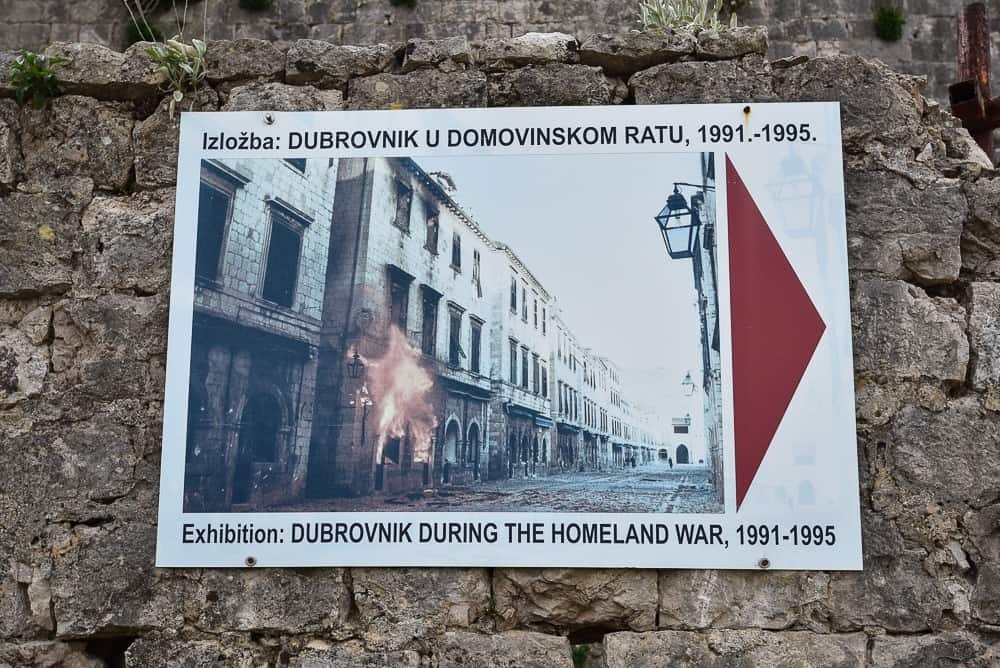
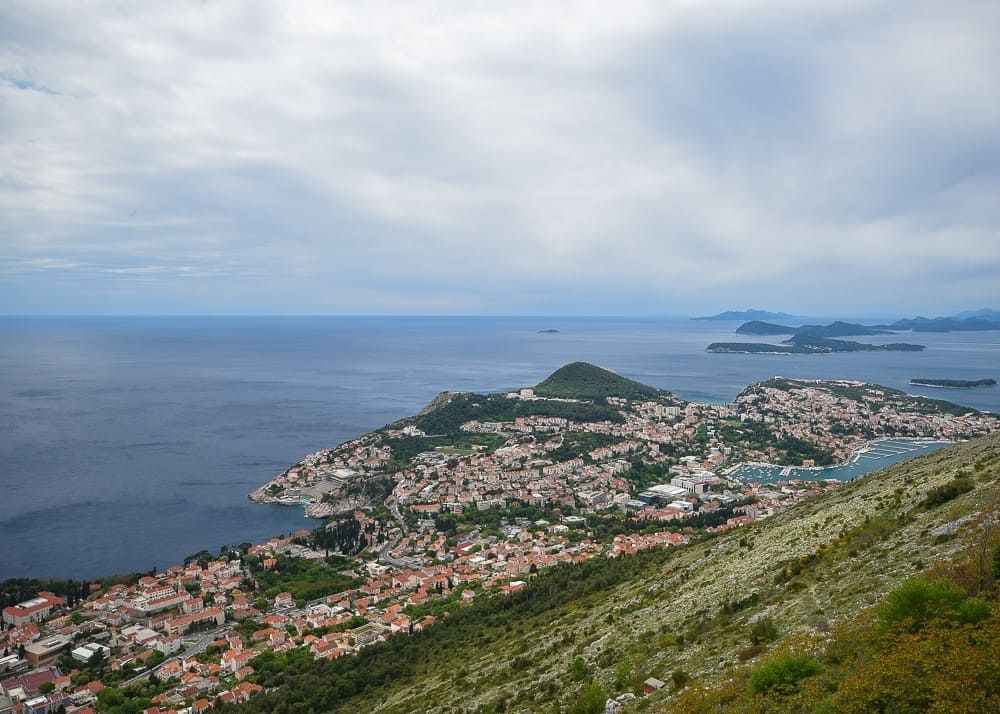
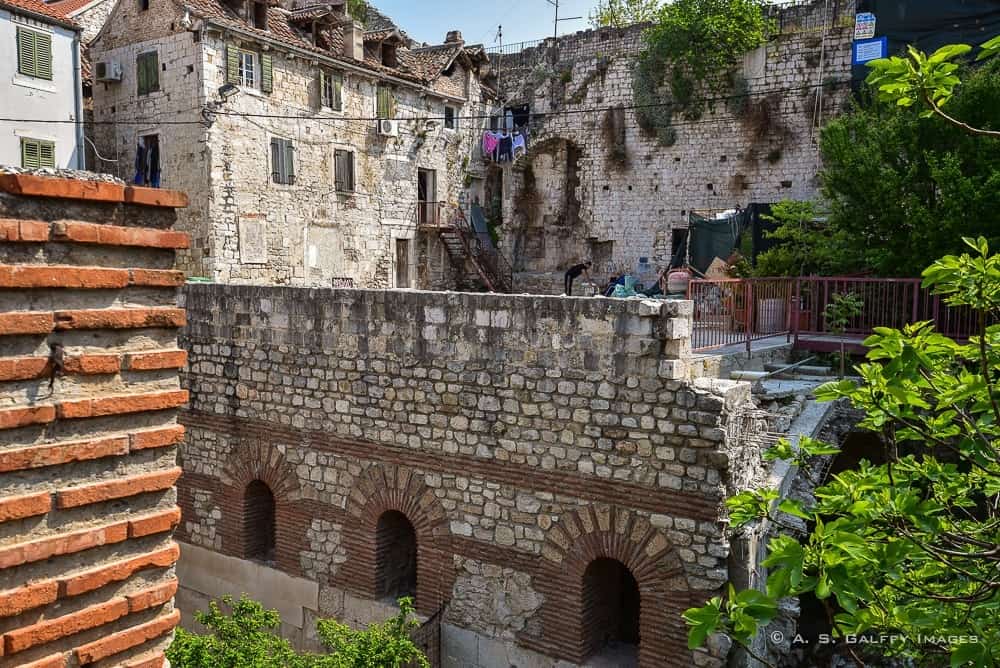 Inside Diocletian’s Palace – The Living Heart of Split
Inside Diocletian’s Palace – The Living Heart of Split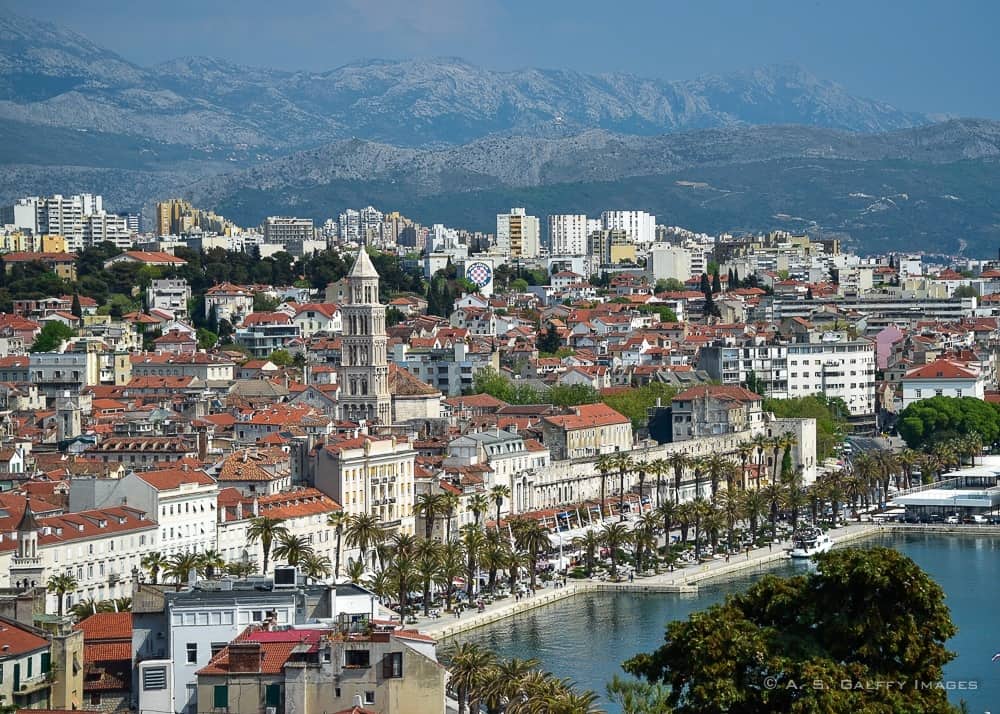



Agness of Fit Travelling
Dubrovnik is a dream destination for me and I would really love to explore it soon. When’s the best time of the year to go there, Anda?
Anda Galffy
Probably spring or fall, Agness. In summer time Croatia is very crowded.
Anisa
One thing I love about traveling is learning the history of other countries. Growing up in the US, we get such a US centric perspective. It is really interesting and sad in many cases to learn the rest. Nice that you could learn more about Croatia’s history and get an amazing view and workout!
Anda Galffy
I’m glad if I could reveal to you a piece of history that is largely unknown here, in the USA. What happened in Dubrovnik was way bigger and more severe that we found out from just reading the news.
Lyn aka The Travelling Lindfields
I knew that the Serbs and the Croats didn’t get along. Even in Australia there was sporadic violence between the two immigrant groups, particularly during football matches but I didn’t realise, or perhaps I had forgotten, how horrific the civil war between them was.
Anda Galffy
I guess they will be now enemies forever. Even after 20 years, they still resent each others.
Elaine J Masters
Such compelling writing and what a story! I wish to visit Dubrovnik the next time I’m in Croatia, my grandmother’s country, and will definitely visit the fort to pay my respects. Thank you for sharing these hard facts. I’m glad that Croatia has rebounded.
Anda Galffy
I didn’t know your grandmother is from Croatia, Elaine. So you are a quarter Croatian too.
Lolo
Absolutely riveting to read! I find the history of the Balkans so fascinating! I didn’t know about Fort Imperial, but I guess I didn’t take the time to look at all the ticket options for the cable car. It was so hot all I could think about was going up and quickly finding a swimming hole later!
Anda Galffy
I don’t blame you, Lolo. We’ve been there in April and the weather was nice and cool. However, you live in Europe, so a trip back to Dubrovnik is not too difficult.
Mary {The World Is A Book}
We were only in Dubrovnik for a day and loved it and can’t wait to return for a longer visit. I longingly looked up wanting to go on that funicular to see the views from above. It’s great to know there is another treasured attraction up there beyond the views.
Anda Galffy
Another reason to go back to Croatia, Mary.
Tanja (the Red phone box travels)
very good post about the war.
Michelle | michwanderlust
Oh wow, Anda. I felt like I was really transported back in time into the Croatian War, reading this post. This is all brand-new information to me – I’d heard about what happened in Bosnia, but I had no idea that Croatia (and the rest of former Yugoslavia) had such a bloody history too – and so recent, as well! If I ever get to Croatia, I’ll definitely look at it in a new light.
Anda Galffy
Thank you for taking time to read my post, Michelle. I’m glad if I could raise awareness about the genocide that took place in Croatia. In fact, very few of us really knew how bad things were there back in 1991.
Ruth | Tanama Tales
Anda, what a powerful article. I learned about the struggles of nations such as Hungary, Czechia and Poland last year. For some reason, the stories touched me and gave me a different perspective of life. A lot of people talk about the beauty of the Balkans but I would like to get deep into the history.
Anda Galffy
Croatia’s War of Independence is one of those painful chapters of history that we should all be aware of. What happened there in 1991 is totally unacceptable.
Rhonda Albom
I have not yet made it to Dubrovnik yet but I have been close. I remember the wars of this region but never studied the ethnic and political reasons for it. Thanks for the history lesson.
Anda Galffy
I’m glad if I could provide some useful information about this part of the world, Rhonda. Hope you’ll make it to Dubrovnik someday.
shere
We have been to Dubrovnik, but I can’t remember the funicular 🙁 We are going on a cruise next year and I came up with the idea to step out in Kotor and then visit Montenegro and ends in Duvrovnik (from here we can easily fly back to The Netherlands). So I’ll definitely add the funicular and the fort to our list